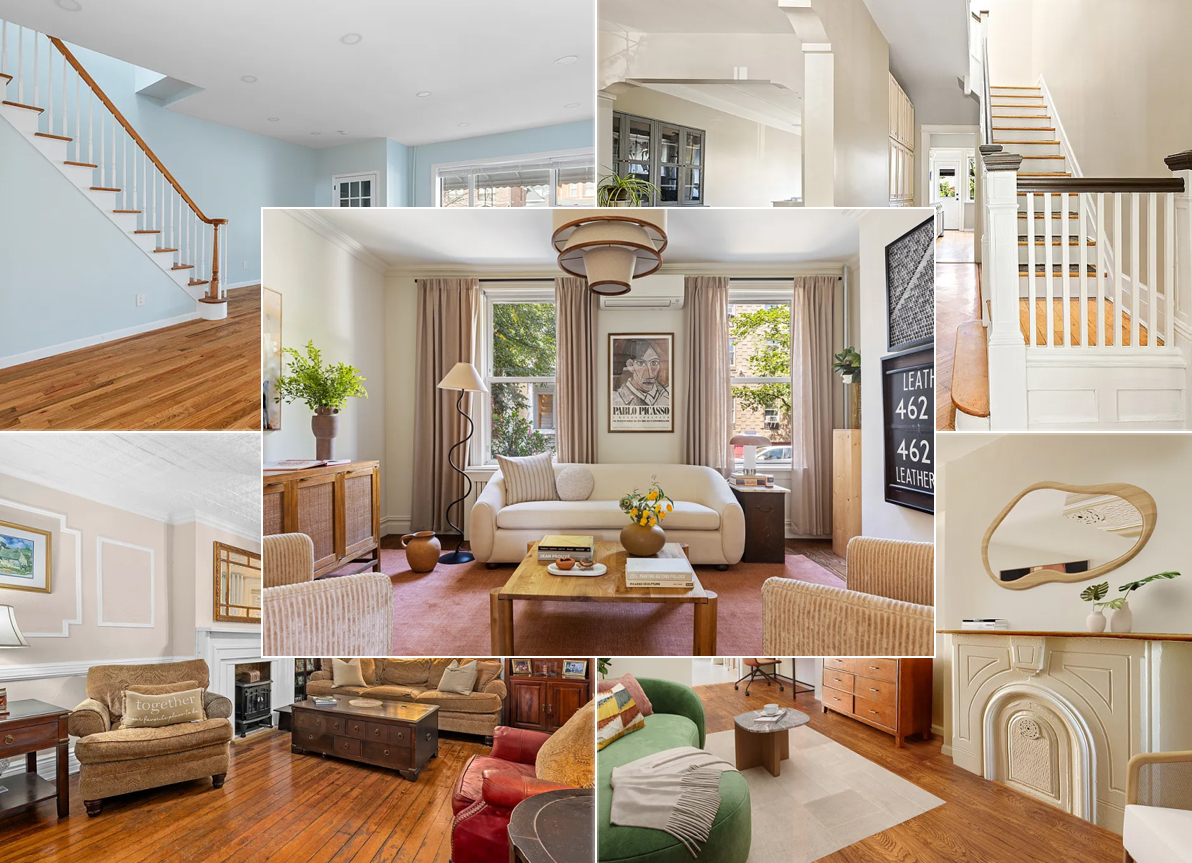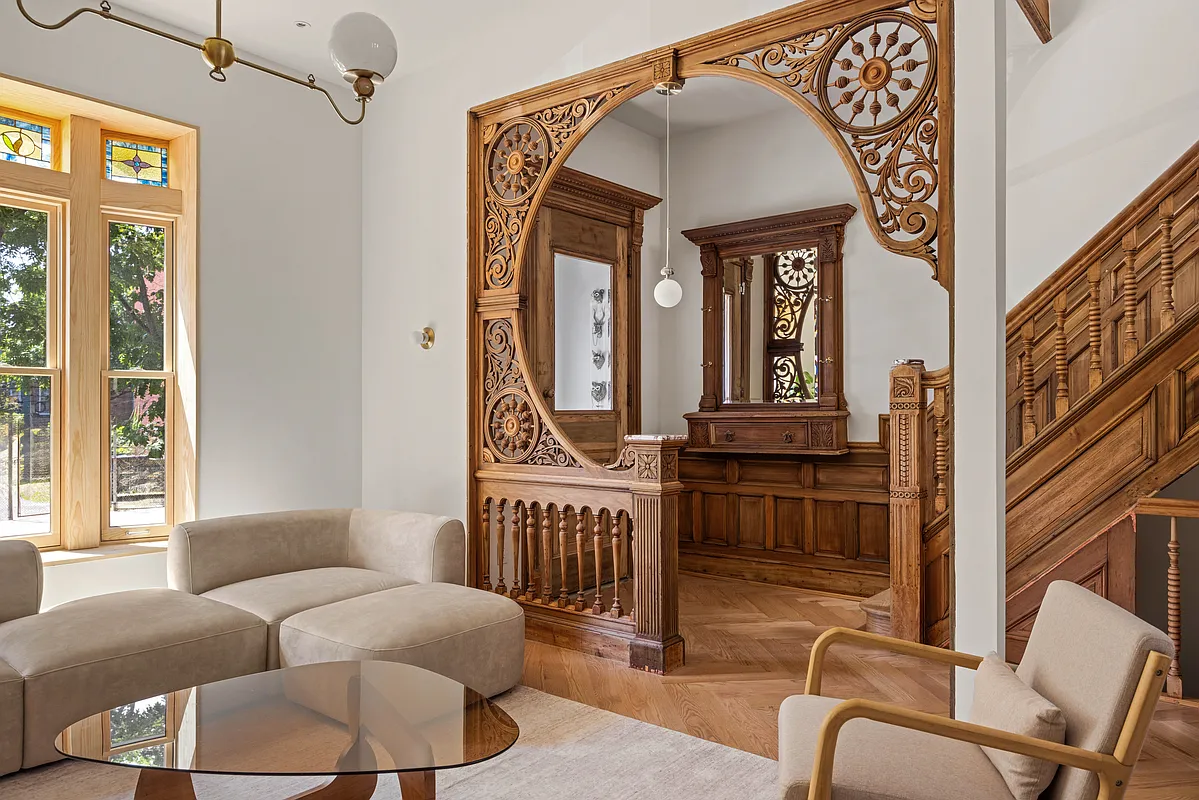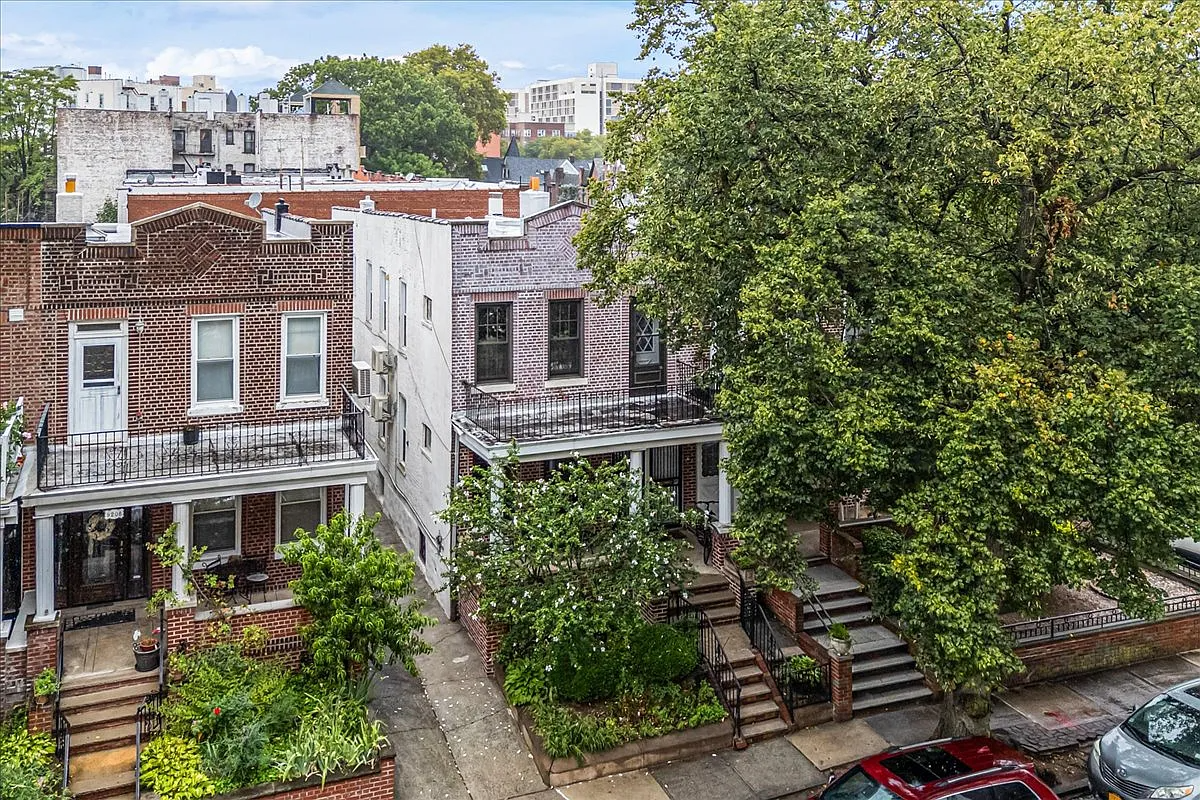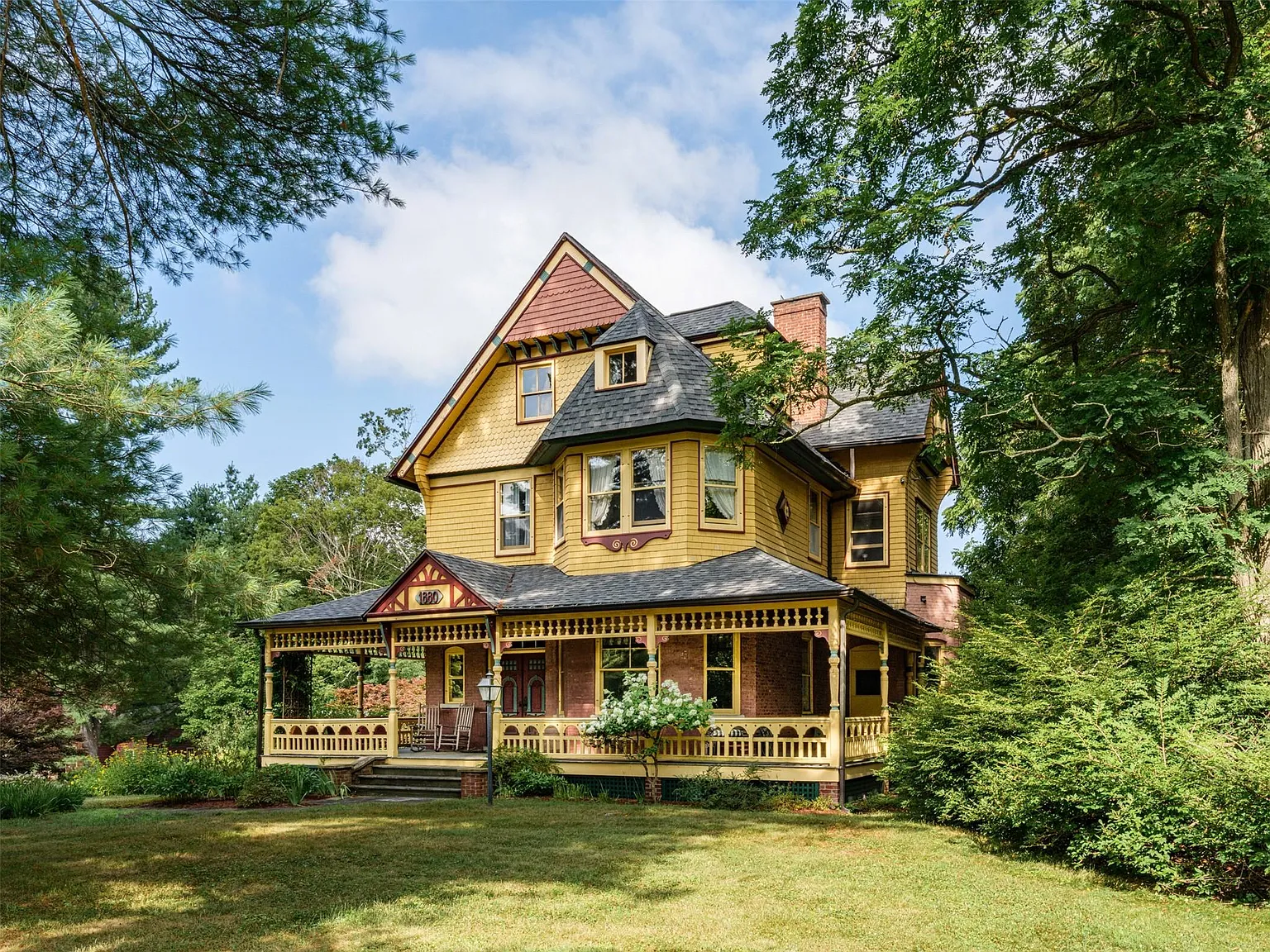The Ugly Flipside of Cheap Mortgages
We were at a dinner party on Saturday night with a friend who bought his house about three years ago, financing it with a 5-year ARM. Eventhough he’s got another couple of years left before his rate would readjust (presumably upwards), he’s getting ready to refinance with a 30-year fixed in the next few weeks….


We were at a dinner party on Saturday night with a friend who bought his house about three years ago, financing it with a 5-year ARM. Eventhough he’s got another couple of years left before his rate would readjust (presumably upwards), he’s getting ready to refinance with a 30-year fixed in the next few weeks. Even though a 30-year fixed rate back then would have probably been around 5.5% (as opposed to 7% today), in this case the bet paid off for him. He couldn’t have afforded to buy the house at the time without using an ARM; now he’s making a good deal more money than when he first bought, and is willing to pay a little more for the security of knowing his rate won’t get jacked up to 9% in a couple of years. Not everyone’s so lucky, as yesterday’s Times article on the topic points out. Some people in a strong financial position used ARMS smartly to lower their monthly costs with the knowledge they could always just pay off the loan with cash if the rate rose too much. Others, like Inga Rogers, the hairstylist from Boston, are finding their backs to wall, unable to carry the new monthly costs after her rate jumps from 3.875% to 6.875%. Interestingly, New York City has a higher rate of ARMs than the rest of the country (57% versus 48%) but the potential threat is mitigated somewhat by a high proportion of wealthy owners; in addition, the higher turnover rate in portions of the NYC market make ARMs often a suitable choice. Are any readers finding themselves or close friends facing a potentially dire situation because of an ARM? We hope not.
It Seemed Like a Good Bet at the Time [NY Times]
Doubling Down with a Second ARM [Brownstoner]
Illustration by Ross MacDonald.





I SO would not count on an influx of inheritance money from Baby Boomers bailing out the housing market, or anything else. Baby Boomers themselves are inheriting much less than previous generations, have been very poor at saving for retirement and have unprecendented medical and elder care costs facing them.
It’s more likely that those Echo Boomers will find themselves sandwiched between raising kids and having to chip in for Mom and Dad’s medical expenses. While younger people have been actually pretty interested in homeownership in recent years, they may end up getting stuck in those starter homes they purchased in their 20s for longer than they may like.
2018 and housing oversupply because not enough echo boomers? Hhhhmmmm? Did someone turn on a switch and forever closed off our borders to legal and illegal immigrants? Ha! You guys are hilarious! LOL!
google brownstoner and this is what you get
“Writing about an unhealthy obsession with historic Brooklyn brownstones
and the neighborhoods and lifestyles they define.”
You’re sad
“Interestingly, New York City has a higher rate of ARMs than the rest of the country (57% versus 48%)…”
These are only loans processed by New York Mortgage Company. Can’t really say this is representative of NYC on a whole without more data.
I do, however, think that a lot more of them are out there than it seems. It’s been said on this blog in the past that ARM’s didn’t make up much of this market. A lot of conflicting info out there.
“They’re supposed to be the follow up to the ‘baby boomers’. A large segment of our population, these echo boomers, will be in the market for housing with the next 5-10 years.”
Yes, but they are nowhere near the numbers as the baby boomers, and in 10 years, many of those baby boomers will be downsizing for out of state locales, or smaller homes in their communities. Sadly, some won’t be around, leaving behind their homes.
There simply aren’t enough echo boomers to take in that supply. We’re not an echo boom – more like a “no boom.” For example most of my friends come from one, two or three child families. My parents friends? I know one family with 15, one of my parents is one of 12, our neighbors one of 11, and many more coming from 5-6 child families. The numbers just don’t add up…I was reading somewhere today that by 2018, because of that oversupply, the housing market will become a non-entity it will be performing so badly.
Dear anon 11:31 – in the case that we’re still in the house 10 years later – the new mtge can be amortized over 30 years. It all depends on the ROR on our investments & other things. I’m not relying on building equity in the house as part of my portfolio – it is just a place to live, and it makes no difference to me renting or owning – the only difference is stability (don’t have to worry about being kicked out by ll) and comfort (can renovate to whatever we like).
Existing home sales fall for fifth straight month
First year-over-year decline in more than 11 years
THE HOUSING BUST
• How low will it go?
• Is your market hot or not?
• Setting the stage for quick home sales
• Latest mortgage rates
• Mortgage calculator
Related Stories | What’s this?
• US housing slowdown continues
• House prices show first annual fall in 11 years
• Slumping Home Sales Lead To Creative Promotions
• Va. home sales drop again in July
• County home sales drop, but prices steady
Most Popular
• Most Viewed • Top Rated • Most E-mailed
• Psych exam ordered for suspect in mom slaying
• ‘Housewives’ gets back to sudsy business
• U.S. loosens airline security rules
• Alcoholics Anonymous may prevent murders
• U.S. Army extends 4,000 tours of duty in Iraq
• Most viewed on MSNBC.com
• Ney’s Gambles
• Drug-resistant TB on the rise in U.S.
• ‘Phishing’ scams on the rise, survey finds
• CIA: Probe Into Renditions
• ‘Winter’ may get a prosthetic tail
• Most viewed on MSNBC.com
• U.S. loosens airline security rules
• Alcoholics Anonymous may prevent murders
• Psych exam ordered for suspect in mom slaying
• U.S. Army extends 4,000 tours of duty in Iraq
• Existing home sales fall for fifth straight month
• Most viewed on MSNBC.com
Updated: 1 hour, 45 minutes ago
WASHINGTON – Sales of existing homes fell for the fifth consecutive month in August as the once-booming housing market slowed further.
The National Association of Realtors reported Monday that existing home sales slipped by 0.5 percent to a seasonally adjusted annual rate of 6.30 million units.
The slowdown in sales was weighing on home prices, with the median price of an existing home sold in August dropping to $225,000, 1.7 percent below August 2005. It marked the first year-over-year price decline in more than 11 years.
Story continues below ↓
——————————————————————————–
advertisement
——————————————————————————–
The weakness in existing home sales followed a report last week that construction of new homes and apartments plunged by 6 percent in August, pushing building activity to the lowest level since early 2003.
The housing sector, which had enjoyed five boom years of record sales, has been slowing sharply this year under the impact of rising mortgage rates and a slowing economy.
David Lereah, the Realtors’ chief economist, said the drop in prices had been expected, indicating that sellers are finally starting to lower their asking prices in the face of weaker sales and soaring inventories.
The inventory of unsold homes rose 1.5 percent to an all-time high of 3.92 million units. At the August sales pace, it would take 7.5 months to sell the backlog of unsold homes, representing the longest period since April 1993.
TELL US WHAT YOU THINK
Do falling home prices have you worried about the economy?
Lereah predicted that prices would likely keep declining for the rest of the year.
“We do expect an adjustment in home prices to last several months as we work through a buildup in the inventory,†he said. “With sales stabilizing, we should go back to positive price growth early next year.â€
Sales of single-family homes were unchanged at an annual rate of 5.51 million units in August, the same as July. But this sales pace was 12.3 percent lower than a year ago. Sales of condominiums fell 3.5 percent to an annual rate of 793,000 units, which represented a 14.5 percent drop from the condo sales pace in August 2005.
By region of the country, sales of existing homes rose 1.9 percent in the Northeast to a seasonally adjusted annual rate of 1.07 million units in August. The median price for a home sold in the Northeast was $271,000, down 3.9 percent from August 2005.
Existing home sales in the Midwest rose 0.7 percent to an annual rate of 1.44 million units with the median price dropping to $176,000, 1.1 percent below a year ago.
Sales in the South fell by 0.8 percent to an annual rate of 2.51 million units with the median price falling to $184,000, down 2.6 percent from a year ago.
Sales in the West fell by 2.3 percent in August to an annual rate of 1.29 million units with the median price dropping to $345,000, up 0.3 percent from a year ago.
CrashIn07, have you heard of the ‘echo boomers’. They’re supposed to be the follow up to the ‘baby boomers’. A large segment of our population, these echo boomers, will be in the market for housing with the next 5-10 years. I don’t have a crystal ball but my guess is that anon 12:57 PM will be making a tidy profit when (s)he sells in 10 years.
“I doubt we’ll still be in the house in 10 years”… Your arbitrage scenerio only works if you’re out before 10 years or prices go up. What happens in year 11 when principle payments kick in? Will the 6% ROR on current investments, be enough to offset the much higher payment you will face in year 11? Remember, your entire principle balance will now be amortized over 20 years…
How do home prices fit into your model? If prices increase, your ‘bet’ paid off. Will you be more or less inclined to sell if prices decline significantly?